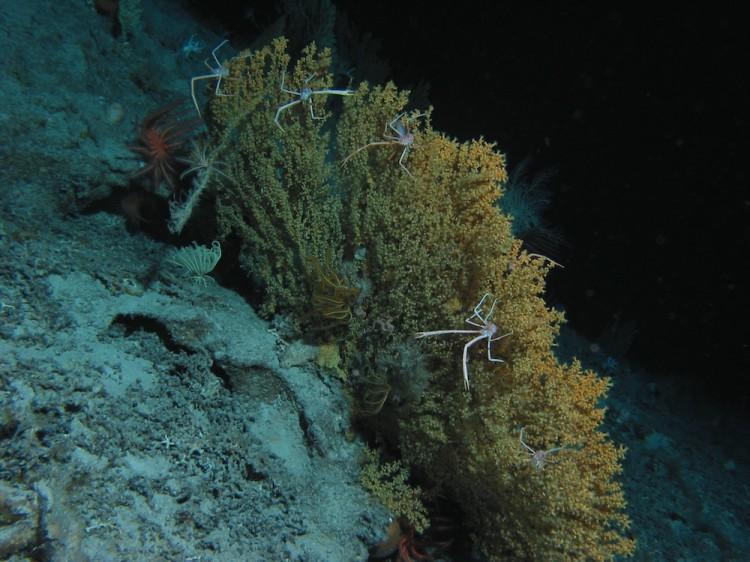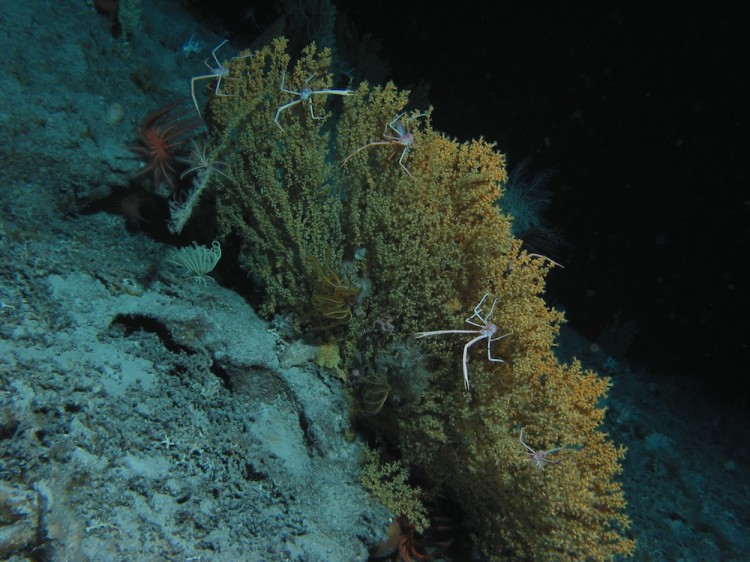Some marine animals that dwell in dark habitats about half a mile below the surface can see blue and ultraviolet light. New research shows they could be using this ability to distinguish edible plankton from poisonous corals.
Two new U.S. studies of crustaceans from ocean-floor sites near the Bahamas looked at three deep sites to find out what they eat as well as the bioluminescent colors of neighboring animals.
The researchers also caught eight species of crustaceans, and tested their vision with microelectrodes and colored lights.
“Call it color-coding your food,” said study co-author Sönke Johnsen at Duke University in a press release, adding that this sensitivity could “sort out the likely toxic corals they’re sitting on, which glow or bioluminesce blue-green and green, from the plankton they eat, which glow blue.”
The team found that all the species can detect blue light, and two crab species can also detect ultraviolet via separate light-sensing channels. They also discovered that the corals have a greenish glow, whereas the plankton glow blue.
“Sometimes these discoveries can also lead to novel and useful innovations years later,” such as an X-ray telescope based on lobster eyes, said study lead author Tamara Frank at Nova Southeastern University in the release.






